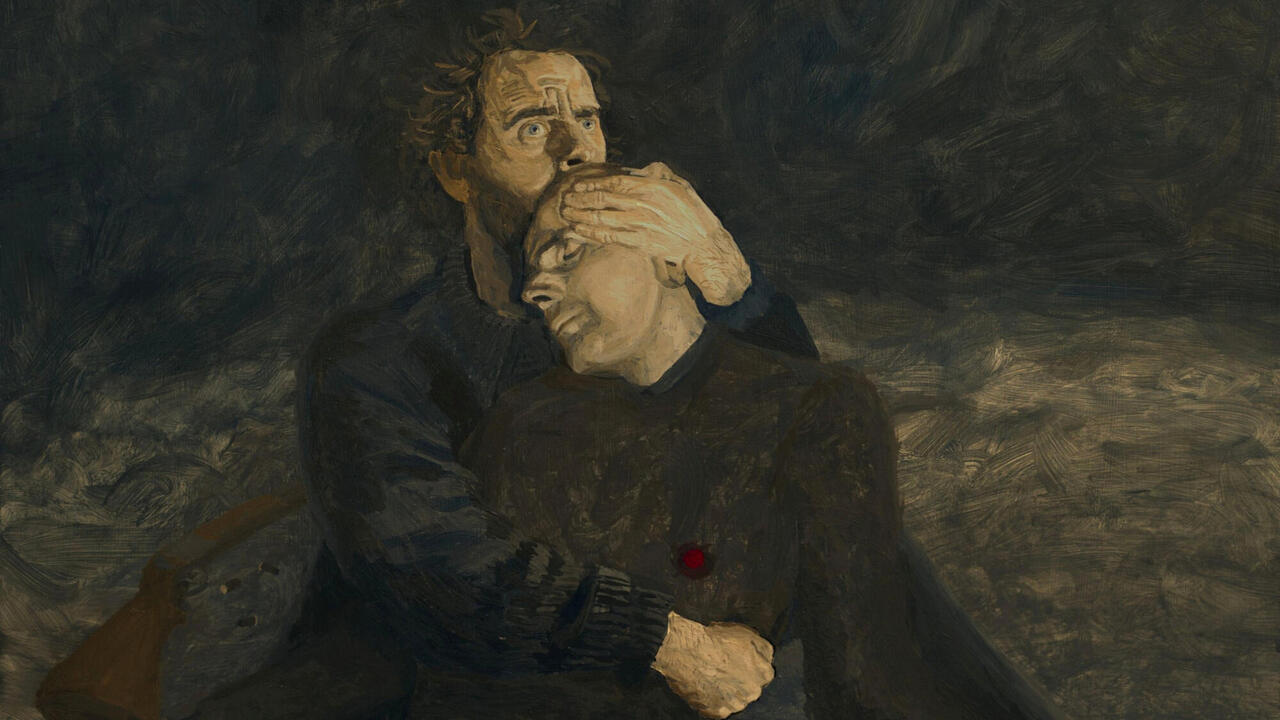Showing Balthus at the Met Isn’t About Voyeurism, It’s About the Right to Unsettle
Our culture is terrified of sexually-awakened girls – controlling the way we look at Thérèse Dreaming would erase an interior life
Our culture is terrified of sexually-awakened girls – controlling the way we look at Thérèse Dreaming would erase an interior life

‘Some viewers find this piece offensive or disturbing, given Balthus’ artistic infatuation with young girls.’
This is the annotation which Mia Merrill would like to see added to the wall text beside Balthus's painting, Thérèse Dreaming (1938). Merrill is the author of a recent petition to convince New York’s Metropolitan Museum of Art to either remove the painting from gallery 907, or provide ‘more context.’ Around 11,500 people so far have signed it. In the petition, Merrill – a human resources manager in New York – points out that at its 2013 exhibition of Balthus’s work, ‘Balthus: Cats and Girls – Paintings and Provocations,’ the museum placed a plaque at the entrance to the show which read: ‘Some of the paintings in this exhibition may be disturbing to some visitors,’ using this to argue that the Met ‘understand[s] the implications of displaying his art as a part of their permanent collection.’
After a hue and cry went up across the internet, occasioning many a hot take, both for and against the petition, Merrill posted an update to the petition: ‘I am not asking for this painting to be censored or destroyed! I am asking the Met to be more conscientious in how they contextualize pieces.’ She would consider the petition a success, she said, if the museum would only just add the above qualification to their description of the painting.

The issue puts those of us who love the painting in a bit of an ethical quandary. I’d honestly never thought of it in the light of sexual abuse before; but looking at it again, I could see what bothered Merrill. We can see Thérèse’s knickers, and a bit of her groin. She is 12 or 13. There have been other cases this year – an exhibition of the work of Eric Gill (the British artist, who died in 1940, sexually abused two of his teenage daughters) at the UK’s Ditchling Museum of Art + Craft in April comes to mind, to say nothing of the renewed post-Weinstein debate around the films of Woody Allen or Roman Polanski – where we’ve had to parse out how much the artist’s abuse of young girls affects the way we look at their art. The political context is a killer, too: how to justify Balthus’s painting without defending recent Alabama senate nominee Roy Moore? I felt myself pulled, as a feminist, towards supporting Merrill’s position.
But the language of the petition, the terms of the debate, still rankled. The notion that it is not seeking real censorship, but is merely making a reasonable demand, deflects and thwarts real engagement; it certainly runs counter to everything that makes art art. Words like ‘conscientious’ and ‘contextualize’ are designed to sound reasonable, but they pack a moral threat: disagree with me and you’re part of the problem. One of the signatories, Jean C. in New York, commented on the petition page: ‘By presenting a sexualized image of an adolescent girl, it normalizes the notion that even young girls are sex objects. This is something we already see too much of in this culture.’ It’s true that young girls are sexualized to an alarming degree in our culture. But what I’m curious about is the passive voice in that construction – as if there were only one way to look at the painting, and that is as a representation of a girl to whom something has been done.

Merrill has a point; this aspect of the painting is troubling. But still I find myself wanting to defend it. There is a way to look at Thérèse that doesn’t make us complicit in the abusive sexualization of children. Yes, Balthus is a perv. But look again at the painting: Thérèse is as pervy as the artist. Look at her enraptured face, her closed eyes; you can almost feel the quickening of her breath. What do the signatories think she's dreaming about? If we only see abuse when we look at the painting, then, somehow, the abusers have won; the men have won; art history is His Story, same as it ever was.
I’m sorry, but that is not what I see, when I look at Thérèse Dreaming.
I’ve always loved this painting. It makes me feel sexy; but in an adolescent way; it restores to me, retroactively, the diffuse desire I felt at 12 or 13. I didn’t know who or what I desired, if it was sex or something more nebulous; just like boys, young girls that age are desiring machines. And as I spoke to female friends, and read what women have written about the painting, I found I wasn't alone.

In her article ‘#MeToo vs. the Museum,’ Alice B. Lloyd writes: ‘I see Thérèse's poses and remember my grandmother instructing me always to cross my legs when I wore a skirt; I never asked why because, on another unspoken level, beyond my understanding, I already knew. Art’s purpose is, at some unspoken level, always to provoke within us that which cannot be confined by manners or contemporary expectations.’
Jen George, writing in the Paris Review last year, said she obsessively identified with Thérèse, and would spend hours in the gallery looking at her. ‘I liked that she was both in this room and not; she was dreaming, but I couldn’t see where she’d gone.’
The writer Stephanie LaCava told me that ‘what’s best about [Thérèse] and most art I love is that she is knowing. That doesn’t always mean a literal take, it can be a kind of wry acknowledgement of the world at a moment of being provocative to existing codes, of being aware of the power of the work, as if she’s hovering above the whole thing. To me, it’s not only that she’s complicit and empowered, but that she realizes her role at large as a woman, even a mythical one – like Peitho, Pandora, Calypso even – she is not relegated to some domestic bullshit or second tier intellect. She’s greater and able. This is what frightens people more.’
LaCava is right: it’s Thérèse herself that’s unsettling. Our culture is terrified of sexually-awakened young girls. Our rush to ‘protect’ them is sometimes just a bid to protect ourselves from their monstrous nubile desire. By trying to control the way people look at this young girl, we rob her of an interior life. Female sexuality cannot be forever cloistered and footnoted and appended: sometimes we have to just let it stand (or sit, awkwardly), no matter how troubling.

The debate brought me back to Jeanette Winterson’s wonderful 1995 ‘Art Objects,’ an essay whose title you can brush back and forth in opposite ways: we objectify art but the art resists, the art fights back. ‘Art cannot be tamed,’ she writes, ‘although our responses to it can be’.
To implement the petition would certainly be a taming. Say the Met includes a warning in the painting’s caption. Ostensibly this does not prevent someone from seeing the painting first, and having whatever reaction they have to it, and then looking at the caption and learning that it’s a work they ‘may find offensive.’ At that point they may feel implicated in the perversion, and resentful, or ask themselves what’s wrong with them that they weren’t offended. Or they might think, ‘actually, yes, I do feel offended!’ In all three cases, we’ve robbed the viewer of their freedom to encounter the work of art in whatever way it addresses them.
Worse, though, would be the case of the viewer who holds their reaction in suspense until they read the card, in which case the caption would be setting the agenda for the art, and not the work of art itself. There is a difference between posting a disclaimer next to the work, and at the entrance to an exhibition, as the Met did for its 2013 Balthus show. Perhaps we need to have a conversation about what museums do and what they do not do. It seems to me that the fine art of curating the fine arts is providing just as much information as will not infringe on the viewer’s experience of the work. The Met, which has refused to remove the painting, isn’t ‘supporting voyeurism and the objectification of children’ by displaying this work; they’re defending the right of art to shock and unsettle, and the right of the viewer to be unsettled, or to find it all a bit meh. If the petition were successful, we’d be asking museum-goers not to look directly at the painting, but to see it through the lens of our fears.
It is not the work of art to make us feel safe; if it does, it probably isn’t art at all.
Main image: Balthus, Thérèse Dreaming, 1938. Courtesy: Metropolitan Museum of Art, New York and Artists Rights Society (ARS), New York / DACS, London





















